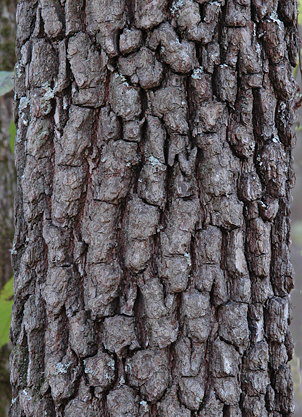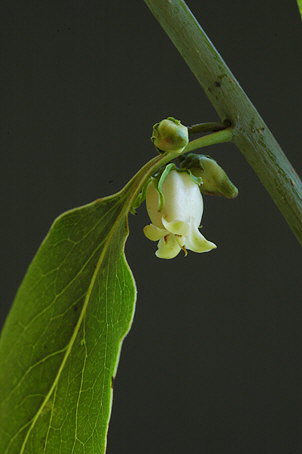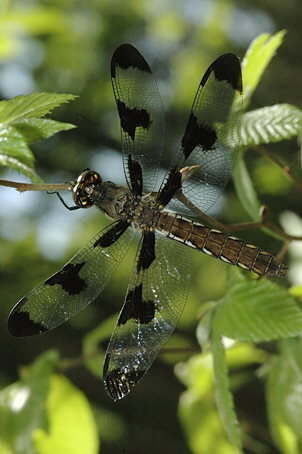| |
|
| |
 |
| |
Persimmon Leaves Front and Back |
Identification:
The leaves are simple,
alternate,
entire, glossy above and paler beneath. Each leaf
is between 4 inches and 6 inches long. Note the
alternate branching on this tree.
| |
|
 |
|
|
Persimmon Bark |
The bark of the Persimmon is one of
its best identifying characteristics. The bark is dark gray to
black, up to 1 inch thick, and develops into thick square blocks
divided by deep dark orange fissures.
| |
|
| |
 |
| |
Persimmon Flower |
Look for the flowers of the
Persimmon in the spring. The flower at right is a male flower.
The species is generally dioecious. Female flowers are larger
and tend to appear alone, whereas male flowers tend to appear in
clusters - note the two flower buds next to the blooming flower in
the image at right.
Other Uses
and Lore:
A variety of
wildlife feast on the fruit. Birds, including the northern
bobwhite, are known to eat it, and it is relished by flying
squirrels, foxes and white-tailed deer. Most famously, it is
enjoyed by the opossum. When John James Audubon painted his
portrait of the opossum, he chose to show it high in a persimmon
tree. Look along the trail for persimmon seeds – they are
often found in the scats.
The Trail From
Station Three to Station Four
 |
|
Twelve-Spotted Skimmer Female |
The trail keeps
descending from Station Three to Station Four. Watch for
dragonflies like the Twelve-spotted Skimmer as they zoom up and down
the trail looking for prey. A female is shown at right - males
have white areas along the leading edge of the wing alternating with
the black spots. It is active from March throughout the
summer. Station Four will be on your left.
|